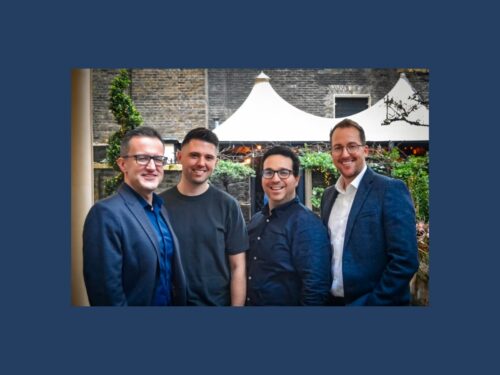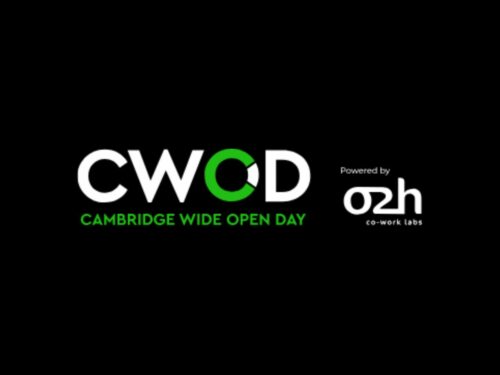If you are struggling to train and retain your technicians, then you might need Netmatters’ Skills Bootcamp. Our...
When Curveball met Cambridge School of Art
It all began a long time ago, in a galaxy far, far away…
With a chance encounter at Tech East’s second birthday bash in London back in July 2018. I met a chap called Dr Matthew Day.
My ears pricked up when he mentioned who he worked for: Anglia Ruskin University. I knew about the Cambridge School of Art (a part of Anglia Ruskin) and wondered what sort of animation and illustration courses they were running, what the students were like and what they were producing.
Because we specialise in making animated explainer videos, animated GIFs and other types of video production, it made sense for us to take an interest in what they were working on and help nurture their talent.
We like giving people, especially students, wanting to get into the animation and film industry, a chance to work on something for a real company. It gives them exposure to the industry and potential contacts who can help them improve and refine their skills in a safe and constructive way.
Hope and opportunity
It also gives us a chance to meet people we might like to work with in the future, either as part of a week’s work experience or an employed member of the team or a freelancer.
We didn’t always get those chances when we were starting out, so we see it as a way of balancing things out. And if we want to have a thriving animation and film industry – of which Curveball is an integral part – we see it as our duty to help develop the people coming into it.
What matters most is that we get the chance to help someone find their feet, explore ideas and see them progress. A real hero’s journey!
So, when Matthew suggested I pop in and meet Dr Nanette Hoogslag – the course leader for Illustration and Animation – I leapt at the chance.
A few weeks later, Daniel Spencer, co-founder and Strategic Director of Curveball, and I jumped on a train to Cambridge. We met Matthew and Nanette and had a lovely cup of coffee. We also had a rather enthusiastic chat about animation, illustration and what the School was doing and how we could get involved with the students.
We left buzzing and a few days later, went back with a plan.
We met Rachel Larkum, the animation and illustration lecturer, who introduced us to the students. They were really keen to work with us and show us what they could do.
The brief was simple.
We wanted the students to create an animation that would show who Curveball Media was and what our values are. We didn’t get too prescriptive. We left it up to the students to decide how they should approach things. It could be an animation. It could be stop-motion. VFX.
We showed them our six-hour day video, and described who the people in the team were and what our values were.
What we wanted them to do first was to come up with a concept of how they would portray us, and then decide how to execute it.
Because, one of the main things we wanted to get across to the students is that if you have a bad idea, no amount of good execution will make up for it. You need a good idea and then good execution to make a really successful video.
We were delighted.
They came to the Curveball studio for a day and met the team, and Rolo, our chocolate Labrador. They went away and thought, sketched and wrote. They pitched their ideas to us and we gave them feedback. They took it all in their stride.
They produced the first draft of their animations. We gave them more feedback. They were open-minded, passionate and thoughtful. That’s why they managed to develop their ideas further.
And when they were finished…
We went back to the School and saw the final animations.
There was one with sushi. One with a cake. A lighthouse. A zombie. A catapult. A caveman. A baseball bat. A magic trick. The numbers 6, 6 and 6. An animated voice-over interview. 8-bit characters jumping all over the place: morphing and evolving, telling a story as they went. Everything from the literal to ethereal ambient abstract metaphor.
You name it, they came up with it. Some wrote the music too. And one team even got someone who sounded not unlike like Albert Finney for the voiceover. We weren’t expecting that.
And that’s why we loved it so much. They surprised us, proving in an instant that they knew what gets people’s attention and what keeps it: the unexpected. And that’s the secret to a truly engaging animation: turning the ordinary into the un-ordinary.
They were proud. We were proud.
And we can’t wait to do it all again. But until then, have a look at their animated explainers on YouTube and see what you think.
Do Your Team Need Coding & Web Development Training?
Amazon Agency Optimizon Continues Expansion with Strategic Acquisition of Marketplace Power
LONDON – Optimizon, a leading Amazon and e-commerce agency in the UK, is thrilled to announce the successful...
Cambridge Wide Open Day returns with ‘Be Curious’ Sci-Tech City-wide event
LEADING science companies and innovation parks will once again open their doors to showcase their contribution to...




